2025
January
Blue Lyretail Killifish, Fundulopanchax gardneri
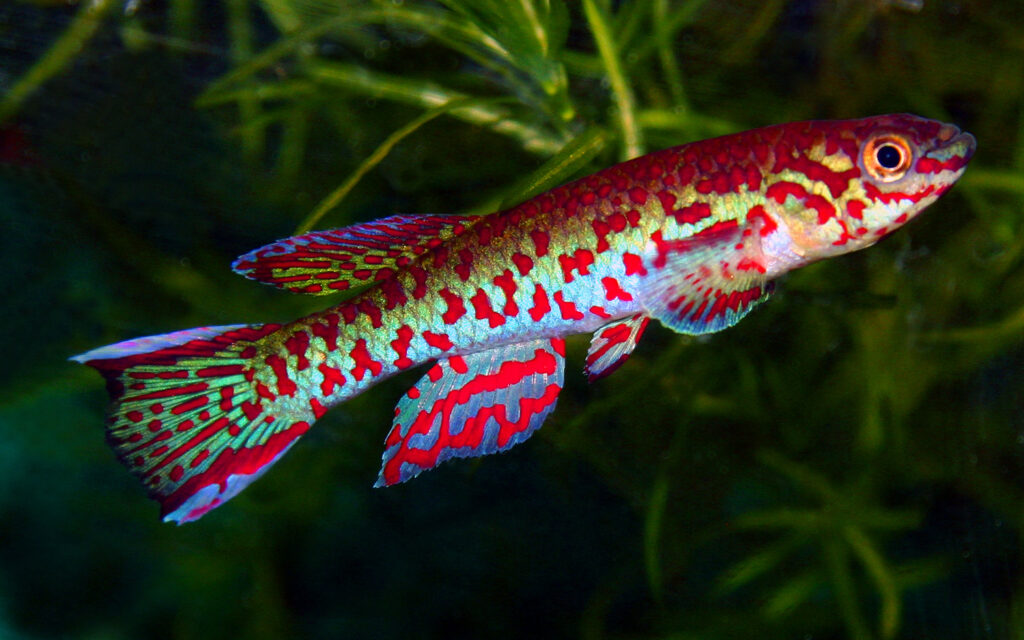
Found in brooks, swamps, pools and streams in humid forested and highland savannah and rainforests of Cameroon and Nigeria. The species has evolved a semi-annual spawning strategy to adapt to the unpredictable nature of the freshwater ecosystems within which it is found. This means that the eggs can survive a period of drying as well as being viable when permanently submerged. It is a bottom spawner and has a one-month incubation period. The species is assessed as Least Concern ( https://www.iucnredlist.org/species/182030/134759395) by IUCN Red List of Threatened Species™ although there are a number of threats that may be significant declines across its range including shifting agriculture, logging and urban development.
February
Mangarahara Cichlid, Ptychochromis insolitus
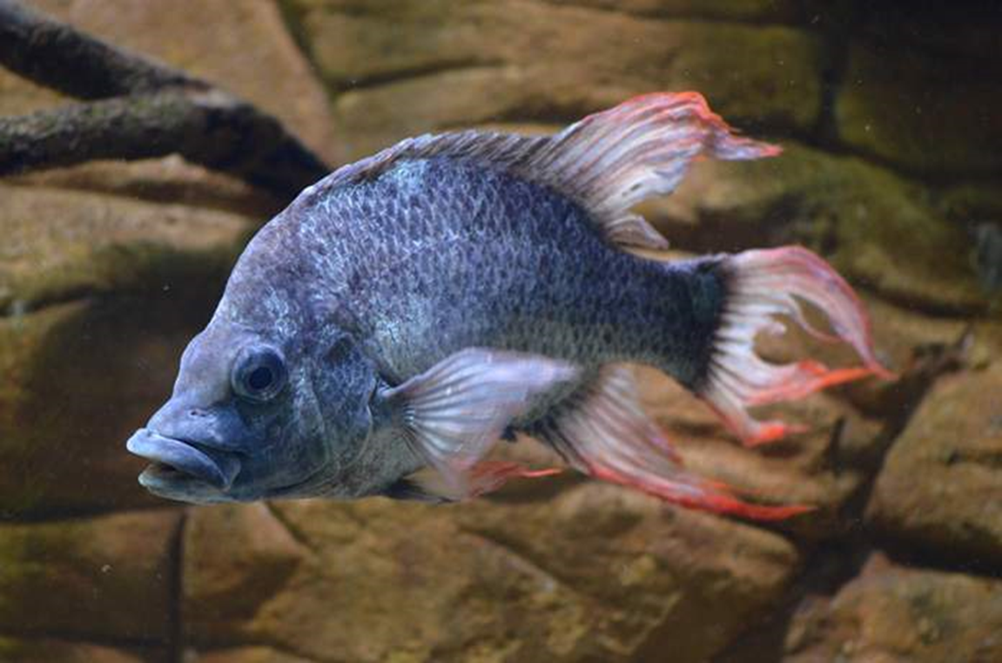
The Mangarahara cichlid or joba mena, Ptychochromis insolitus, is endemic to the Sofia River catchment of Madagascar. The species is assessed as Critically Endangered by IUCN Red List of Threatened Species™ due to its small range, declining population, and threats from loss of habitat and loss of water caused by upstream dams. The species received global attention in 2013 when London Zoo launched a global search for a girlfriend for their two male fishes in a bid to start a conservation breeding programme. Captive populations have since significantly increased, and captive bred individuals can now be found in 23 institutions globally. This is particularly important as the situation in the wild has further declined. In 2013, a survey of the Amboaboa river near Marotandrano found a small population of the Mangarahara cichlid, however, a survey of the same river in 2024 found no evidence of the species.
March
Acıgöl Killifish, Anatolichthys transgrediens
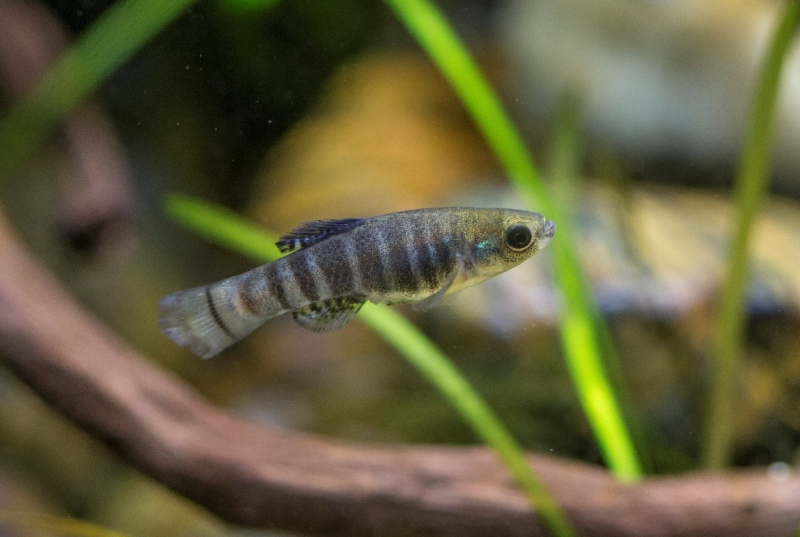
The Acıgöl killifish, Anatolichthys transgrediens is endemic to Lake Acıgöl, Southwest Turkey. The lake is approximately 35m² and is known as the ‘bitter’ lake due to the high sulphate springs that feed into it. The killifish is currently classified as Critically Endangered by the IUCN Red List of Threated Species ™ due to its limited range. Invasive species such as the Mosquitofish, Gambusia holbrooki, salt mining, pollution, and agricultural practices have been the main pressures on this species and its habitat. In June 2024, the Acıgöl killifish was given an IUCN Green Status of Critically Depleted with a Species Recovery Score of 15%. The Turkish Ministry of Agriculture and Forestry, Hacettepe University and Istanbul Aquarium relocated a population from Lake Acıgöl to Istanbul Aquarium in Sept 2024 to safeguard this species in an ex-situ capacity. This killifish is a priority within the EAZA Cyprinodontidae and Aphaniidae European Endangered Programme (EEP) and is currently cared for in several zoos and aquariums in Europe. Collaborations between Turkish institutions and European Zoos and Aquariums are crucial to protect these insurance populations as their wild counterparts could be lost forever.
Nominated by FFSG Member Alex Cliffe
April
Zeravshan Dace, Leuciscus lehmanni
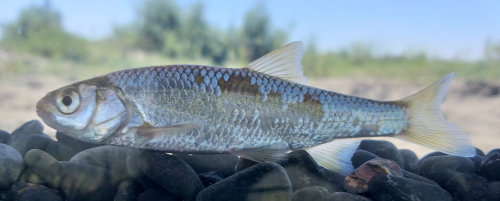
The Zeravshan dace, Leuciscus lehmanni, is a native freshwater fish species endemic to the Zeravshan and Amu Darya drainages, part of the Aral Sea Basin in Central Asia including Uzbekistan, Tajikistan and Turkmenistan. Morphologically, it is characterized by dorsal fin rays numbering III 7-8, anal fin rays III 8-10, and lateral line scales ranging from 42 to 48. The species exhibits a maximum recorded size of 22 cm in length and 160 g in weight. Its distribution, biology, and ecology remain poorly studied, but it is known to inhabit lowland and foothill regions of the Zeravshan River, typically in areas with slow-flowing water and substrates dominated by mid-sized rocks. It coexists with other native fish species, including Capoeta heratensis, Schizothorax fedtschenkoi, and Triplophysa uranoscopus. The Zeravshan dace is primarily algivorous, feeding on algae, but also consumes insect larvae.
The species faces significant threats from anthropogenic activities, including damming, habitat alteration, and the introduction of invasive fish species. Additionally, extensive soil excavation in the Zeravshan River basin has led to the degradation and destruction of its suitable habitats. Due to limited research and ecological data, the conservation status and population trends of the Zeravshan dace remain uncertain, necessitating further studies to inform effective management and protection strategies.
Nominated by FFSG Member Akbarjon Rozimov, Uzbekistan
May
Barred Tail Pearlfish, Notholebias minimus
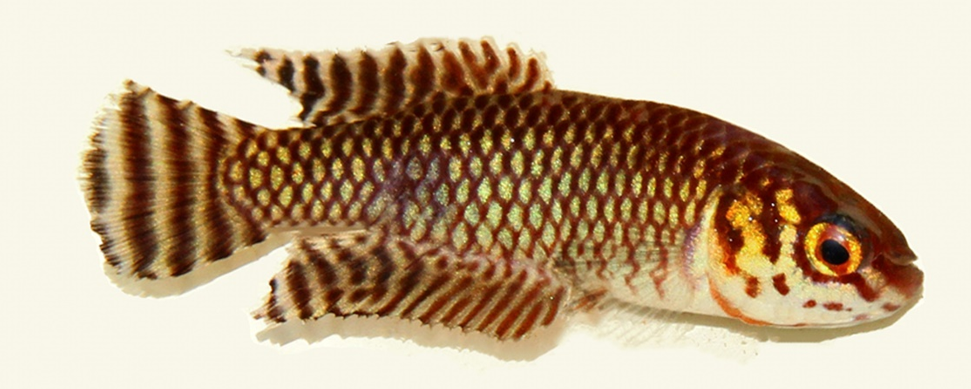
Image © Yuri Borba
The Barred Tail Pearlfish, Notholebias minimus, a threatened species of South American Killifish (Rivulidae), inhabits temporary wetlands in the Atlantic Forest biome, in the coastal plains of the southeastern region of Brazil, in the State of Rio de Janeiro. Its distribution is limited to areas west of Guanabara Bay, ranging from the Jacarepaguá Lagoon System to the Guarda River basin, in the municipalities of Rio de Janeiro, Seropédica, and Itaguaí. The species, like most annual Killifish, has a restricted geographic distribution, low dispersal capacity, small body size, rapid growth, pronounced sexual dimorphism, and a life cycle synchronized with the rainy season. During the dry season, the eggs in the substrate remain in embryonic diapause, awaiting the next rainy season to initiate the life cycle at the onset of the rains. The species is assessed as Endangered by the IUCN Red List of Threatened Species™. Agricultural expansion and unplanned urban sprawl are the primary causes of significant population declines across the species’ distribution, due to habitat fragmentation, landfilling, cattle grazing, pesticide use, and draining of wetlands. However, countermeasures are being taken to conserve this species. It is included in the Brazilian National Action Plan for the protection and development of strategies for the conservation of endangered species of the Rivulidae family, known as the “PAN Rivulídeos” of the Chico Mendes Institute for Biodiversity Conservation (ICMBio), linked to the Ministry of the Environment.
Nominated by FFSG Members Carlos H. P. Luz, and Paulo A. Buckup, Brazil
